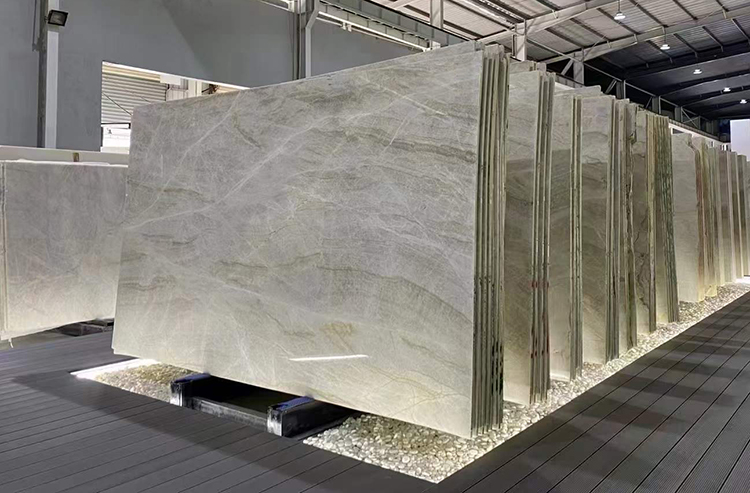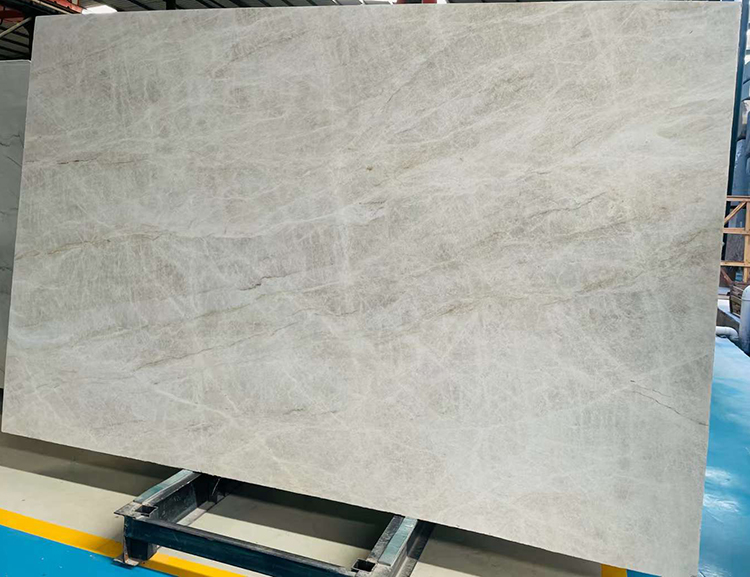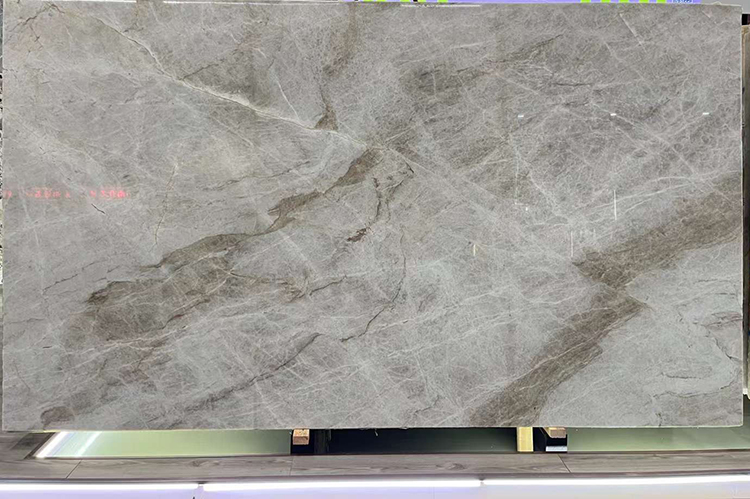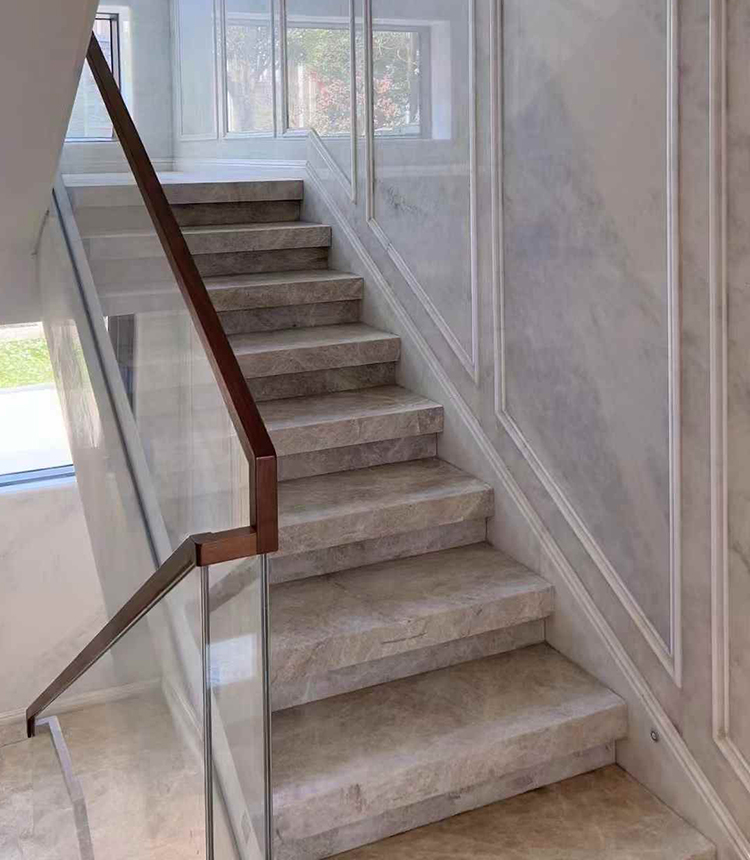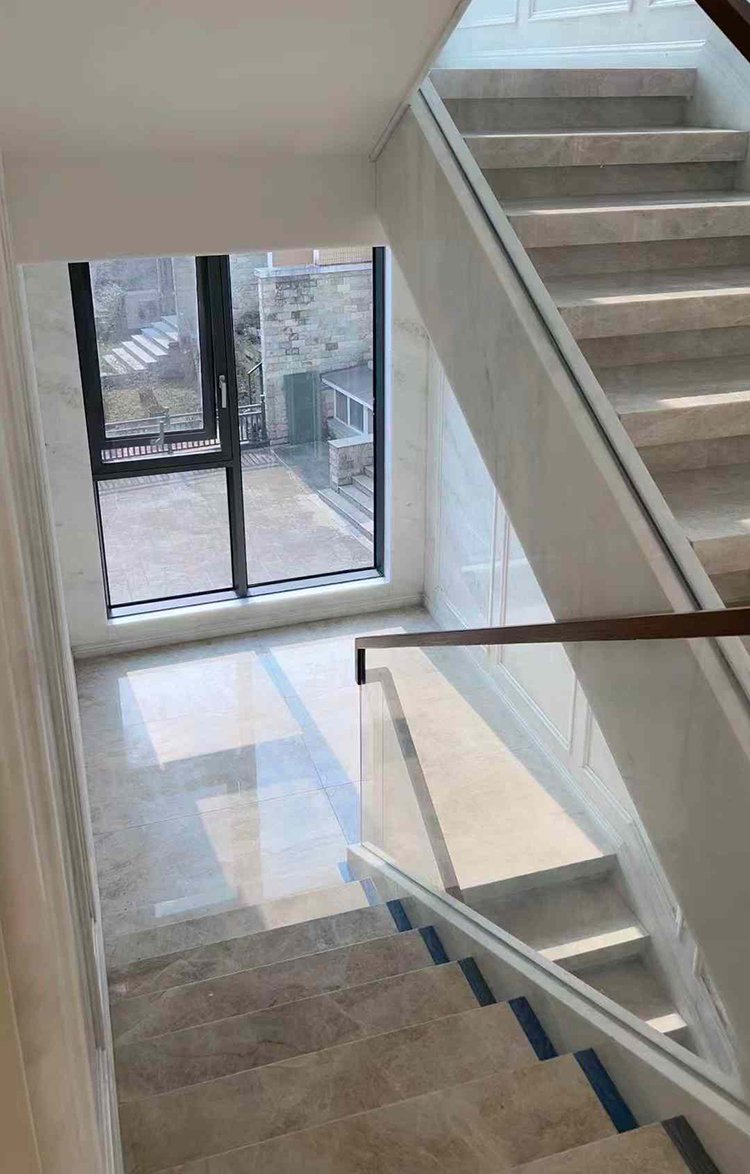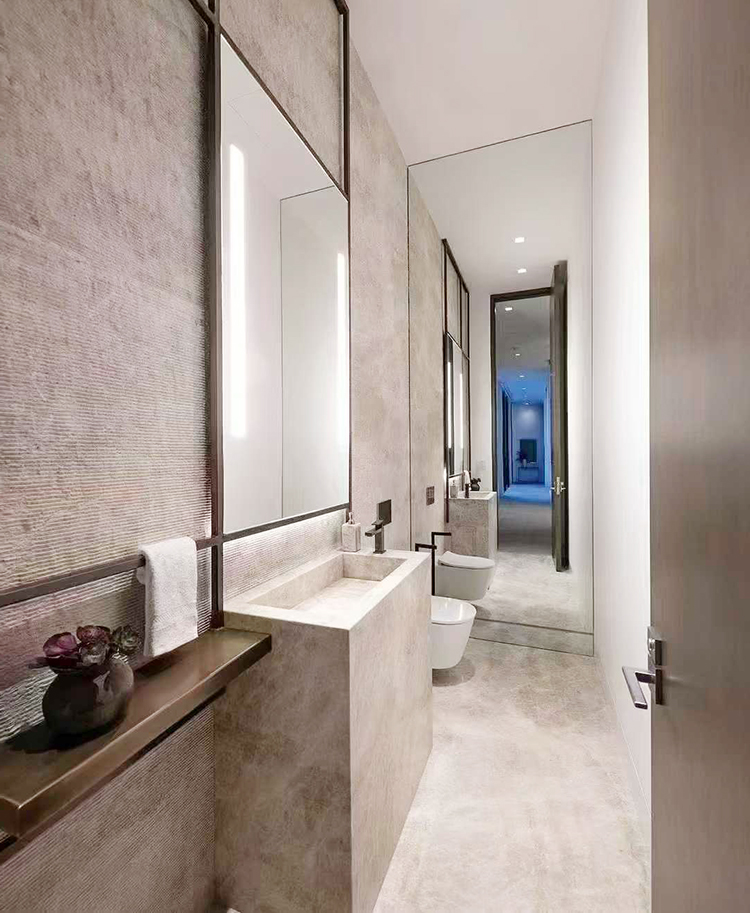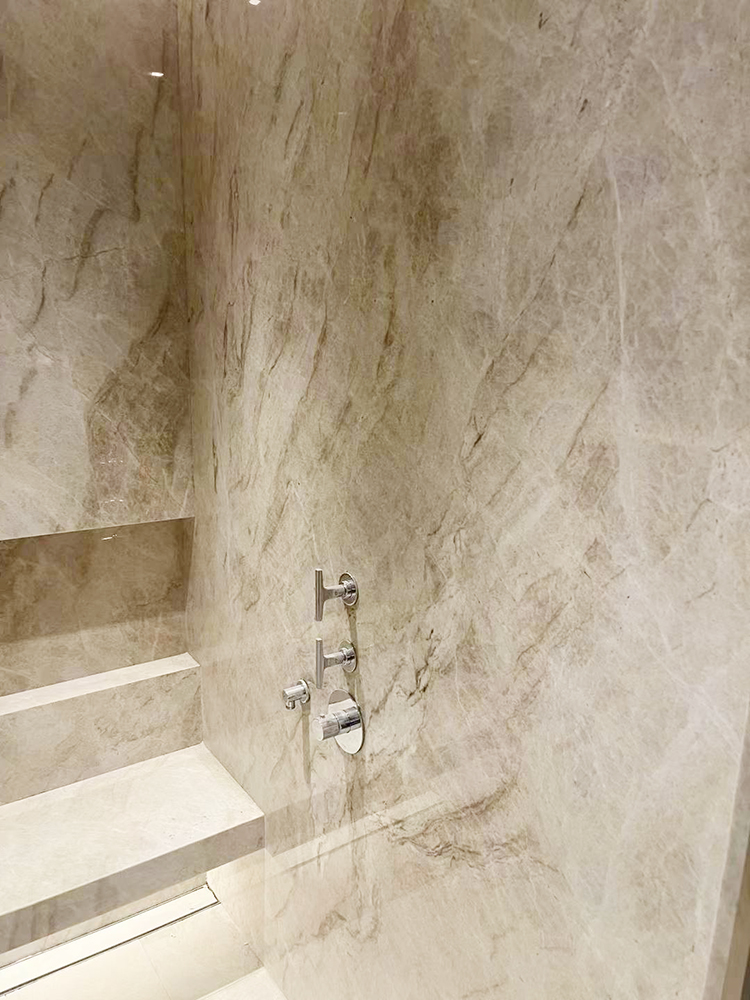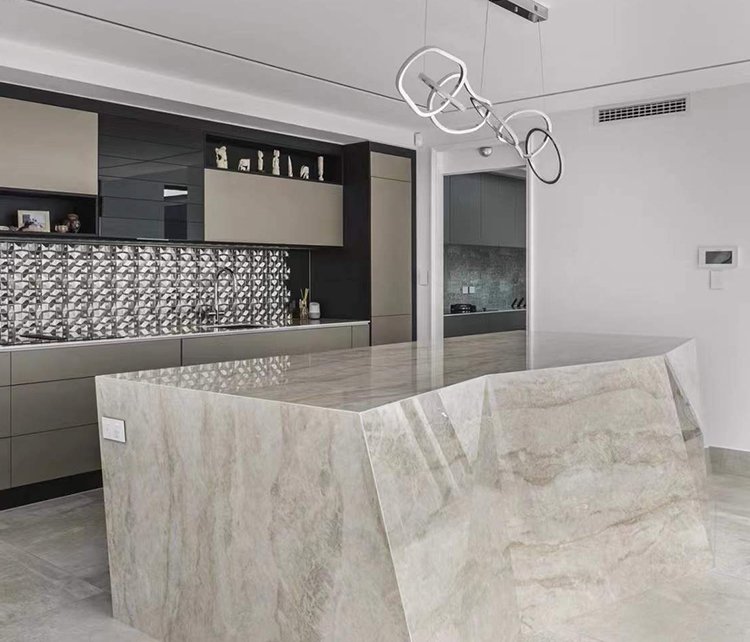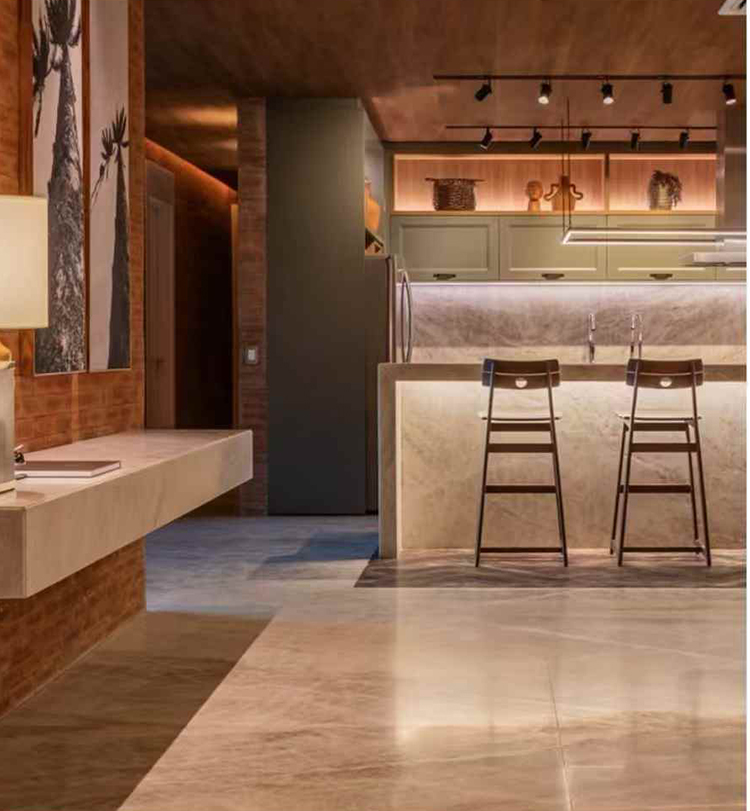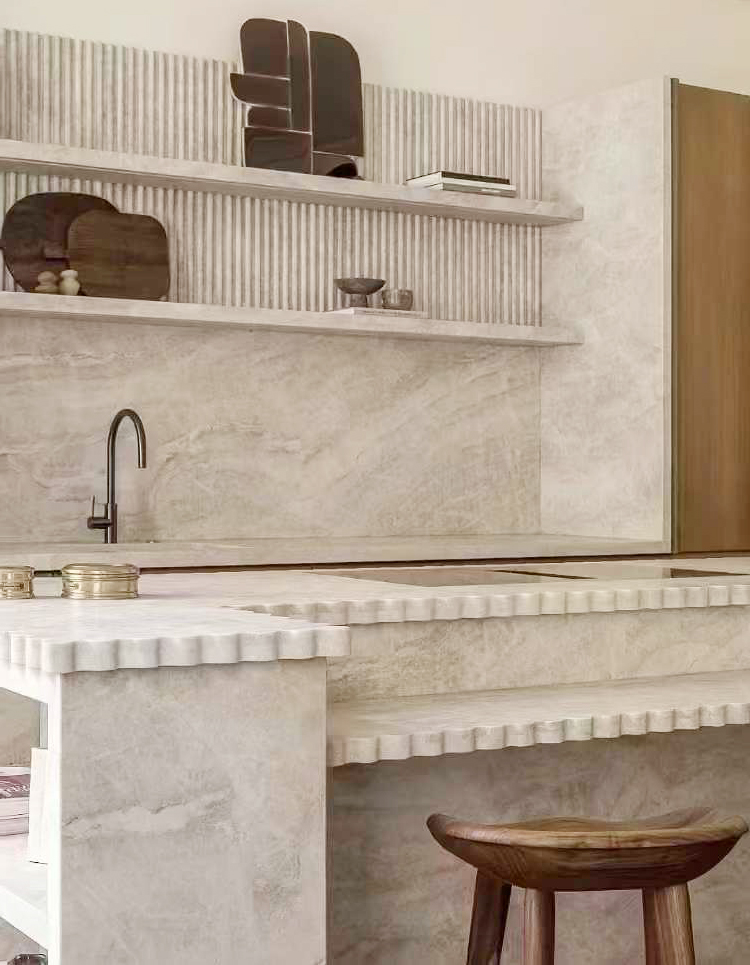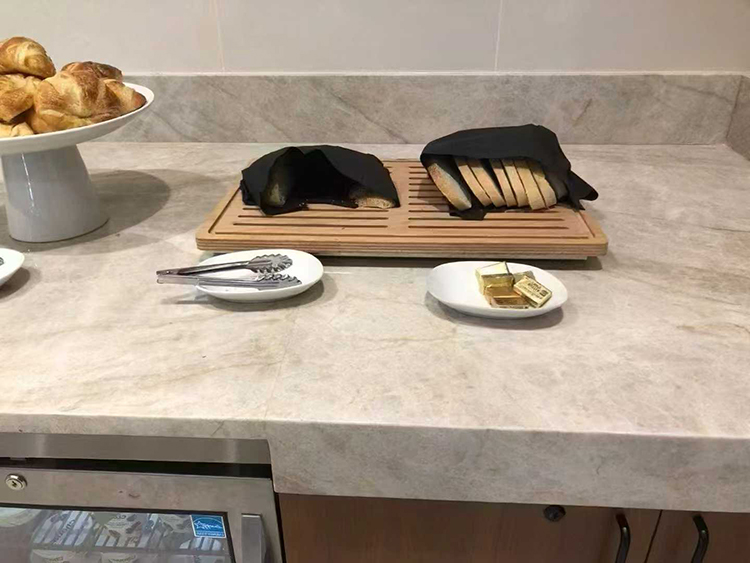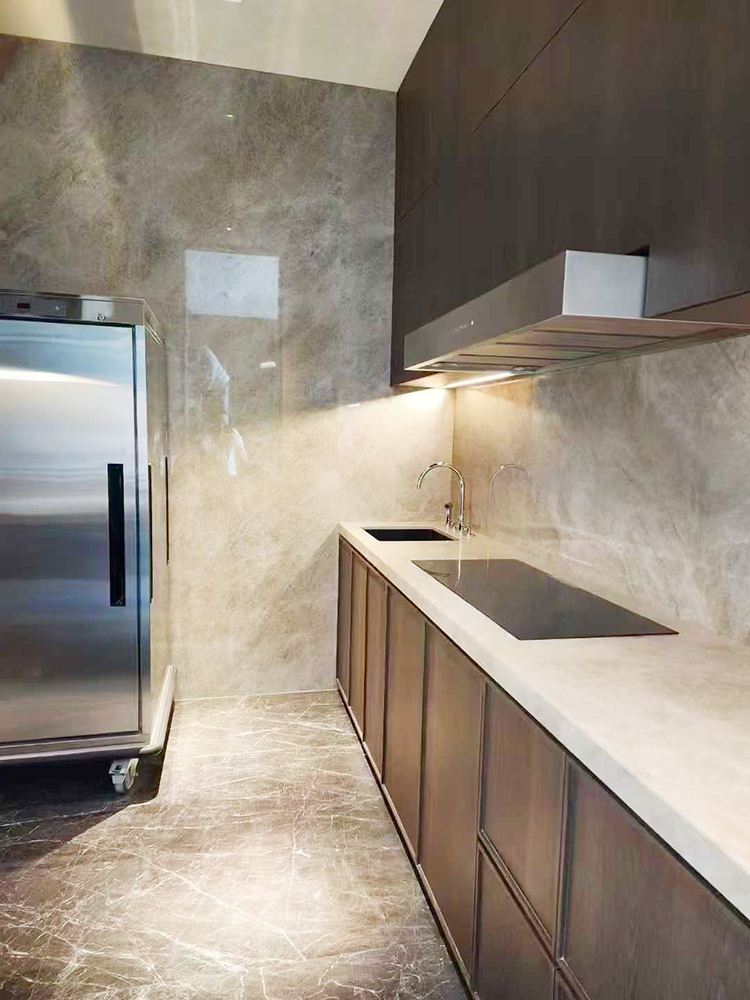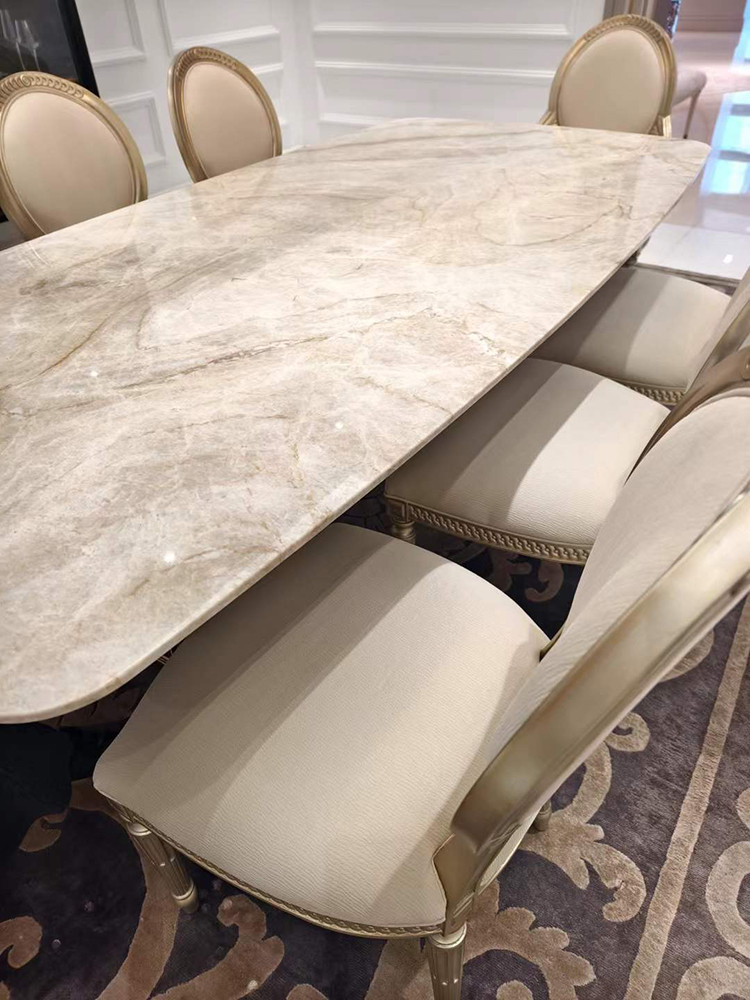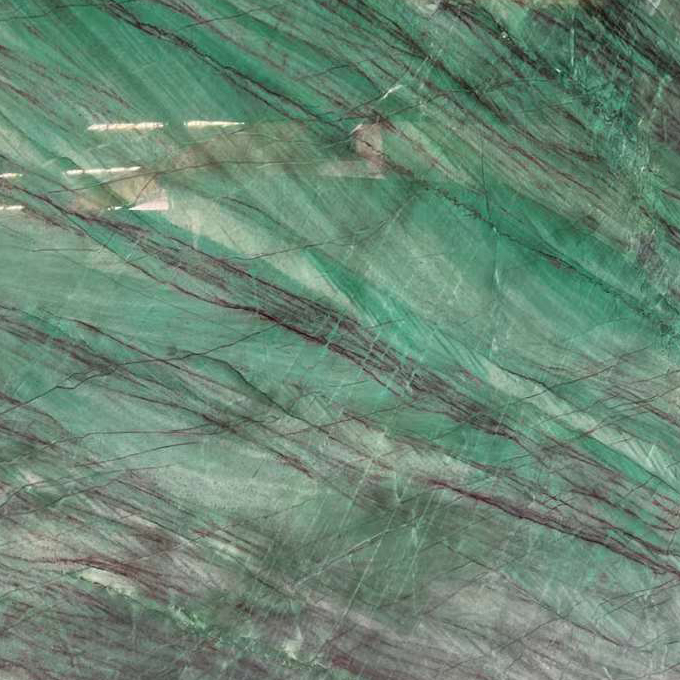The interior structure of the Taj Mahal quartzite is similar to a natural ink painting: the white cloud-like patterns are towering, the winding gray-black flow lines are like undulating mountains, and occasionally there are green or yellow mineral crystals scattered throughout, like lake ripples. Each piece of stone has an own creative temperament because to its natural single product texture.
High-end interior design favors Taj Mahal quartzite because of its texture, which blends the beauty of realistic and freehand design. It works well for scenarios like backdrop walls, counters, floor paving, and creative screens, particularly in settings with a modern minimalist, natural, or new Chinese aesthetic. Its light hue may make the room seem brighter, and the flowing texture breaks up the monotony and gives the impression that the view is "changing with every step."
The Taj Mahal quartzite is not only a testimony to geological wonders, but it is also an artistic representation of the union of nature and humanity. It transforms the beauty of lakes and mountains into immortal poetry by using stone as paper and time as a pen, instilling creative energy beyond time and place in modern environments. In the industrial era, this "breathing stone" serves as a reminder that genuine richness stems from the wonder and inheritance of natural beauty.







